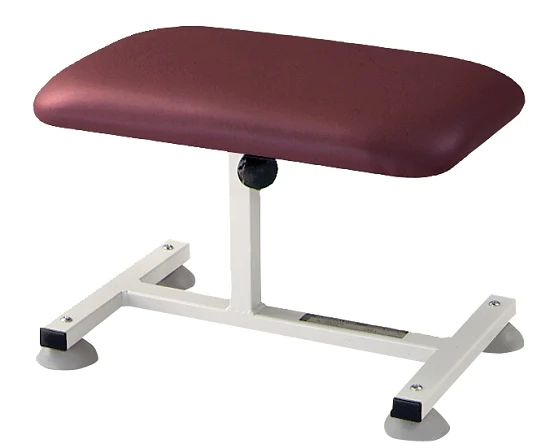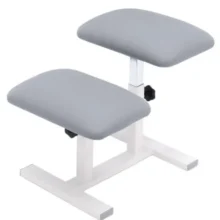Below are some of the uses of a flexion stool in traction therapy:
- Spinal Decompression: The primary purpose of a flexion stool is to facilitate spinal decompression. Traction therapy involves applying a controlled pulling force to the spine to create space between the vertebrae. This decompression relieves pressure on spinal discs, nerves, and soft tissues, which can be beneficial for conditions such as herniated discs, sciatica, and spinal stenosis.
- Segmental Traction: Flexion stools are designed to provide segmental or localized traction to specific areas of the spine. By adjusting the positioning and angle of the stool, therapists can target the traction force to the precise region of the spine that requires treatment. This allows for a highly targeted and effective approach to relieving pain and improving spinal alignment.
- Enhanced Patient Comfort: The design of a flexion stool takes into consideration the comfort of the patient during traction therapy. The padded cushioning and adjustable features of the stool make the treatment more comfortable and tolerable for patients. This is especially important for those who may have apprehensions or discomfort associated with traditional traction methods.
- Flexion and Extension Movements: Flexion stools are often equipped with mechanisms that allow for controlled flexion (forward bending) and extension (backward bending) movements of the spine. These movements can be tailored to the patient’s condition and treatment goals. Flexion can relieve posterior disc pressure, while extension can help correct spinal alignment.
- Therapist Control: Therapists have precise control over the amount of traction force applied, as well as the angle and duration of the traction. This level of control ensures that the therapy is both safe and effective, as therapists can make real-time adjustments based on the patient’s response and progress.
- Patient Positioning: Flexion stools offer a platform for patients to position themselves comfortably. Patients can be secured to the stool to prevent slipping or sliding during traction therapy, ensuring their safety and the accuracy of the treatment.
- Versatility: Flexion stools are versatile tools that can be used for a variety of spinal conditions and treatment protocols. Whether the goal is pain relief, improved spinal mobility, or spinal rehabilitation, these stools can be adapted to meet the specific needs of each patient.
In summary, a flexion stool in traction therapy serves the essential purpose of providing controlled and targeted spinal decompression. It offers flexibility in treatment, enhances patient comfort, and allows therapists to customize the therapy to address specific spinal conditions and patient needs. This specialized equipment plays a vital role in improving spinal health and relieving pain for individuals with various spinal issues.




Reviews
There are no reviews yet